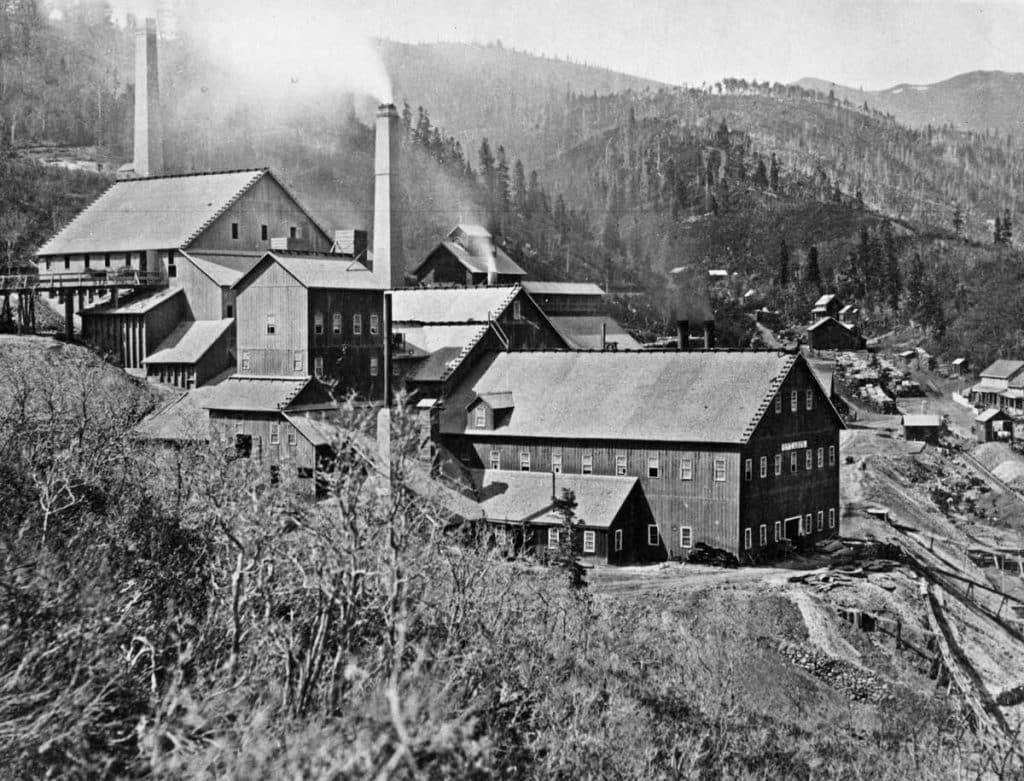The Park City Museum is hosting a lecture called “Marcus Daly’s Utah Years” given by attorney and historian Brenda Wahler on Wednesday, May 3 from 5-6 p.m. at their Education and Collections Center located at 2079 Sidewinder Drive. Marcus Daly is famous for his copper mines in Butte, Montana, but did he have an impact in Park City before his time there?
The answer is probably.
The Ontario Mine is the mine that really put Park City on the map. Before its discovery, mining started in Park City in the Lake Flat area near the present-day Silver Lake Lodge and Stein Erikson Lodge area. It is there where mining mogul George Hearst was looking into a purchase of the McHenry Mine (which he ultimately was not interested in) and allegedly ran into Marcus Daly. Daly had apparently just seen the initial diggings for the Ontario Mine, discovered by Herman Buden and a few friends. He let Hearst know it was something worth looking at.
Hearst did, although another group had made a bond to purchase the claim. He had R.C. Chambers create a bond for the claim as well, in case the other group let theirs lapse. The other group did lapse on their thirty-day bond, and Chambers was able to secure the Ontario for Hearst. This account fails to mention that Daly already knew and befriended Hearst during their time in Virginia City, Nevada.
Other accounts note that Daly had seen a piece of ore taken from the early digs and that it looked promising. While in Salt Lake, he mentioned it to R.C. Chambers (apparently another old friend), who went up to Park City to see for himself. Chambers then contacted Hearst to secure funding to purchase the claim.
Still more accounts note that Daly was miner in Park City and heard about the prospect, or that he told Hearst of the claim and not Chambers, or that Daly only heard about the claim once the claimholders put out an enormous asking price of $30,000 for rights to the mine, or that Daly bought the Ontario himself first. More accounts yet leave Daly out of the story entirely, only mentioning R.C. Chambers finding the prospectors at work on the mine and urging Hearst to invest.

Credit: Park City Historical Society & Museum, PCHS Photograph Collection
What is certain is that Buden and three others are listed as the owners of the claim for the official claim filed at the patent office. Those same men are then listed on the indenture for the sale of the claim, which notes it was being sold to George Hearst of San Francisco.
Nearly all accounts for the formation or history of the Ontario Mine mention R.C. Chambers handling the sale for Hearst, which included a stake in the mine for his inspection of the claim and work to buy it. Chambers did indeed become rich from the Ontario Mine, due to his ownership stake (and his consistent income from being the mine superintendent), so we know he was heavily involved, even without his name on the sale agreement.
Only about half of the accounts mention Marcus Daly, however. His name also does not appear on the indenture, but his involvement is based much more on word of mouth. His involvement is likely, however, because of three factors.
One, that he is mentioned at all, let alone often, in the history of the Ontario – that the accounts vary over time just speaks to the nature of word-of-mouth storytelling. Two, that he was friends with Hearst and Chambers already – friends help friends, and in those days often helped or partnered in business ventures. Three, that when Daly was looking for investors to help him purchase the Anaconda Copper Mine in Butte, Hearst did not hesitate to help him – several accounts note that this quick investment without seeing the copper mine was due mostly to Daly’s advice to Hearst and Chambers to go after the Ontario Mine some years before.
Learn more about Daly and his time in Utah, including Park City, at the lecture.